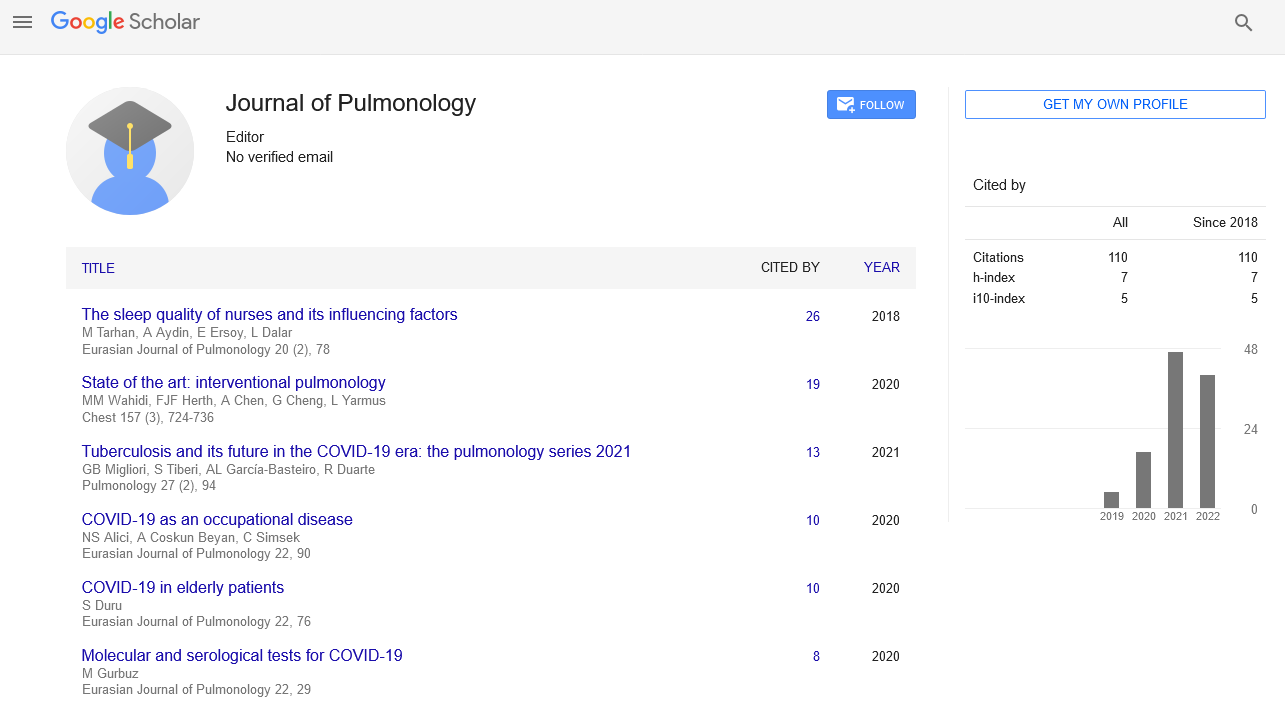
Sign up for email alert when new content gets added: Sign up
Abstract
Dead space breathing in patients with cancer
Author(s): Tanja Eichkorn*Dyspnea from musculoskeletal, circulatory, and ventilatory origins is frequently experienced by cancer patients, and cardiopulmonary exercise testing is the best way to diagnose dyspnea (CPET). As part of this retrospective pilot investigation, we used CPET to assess patients with hematologic and solid malignancies to identify the main cause of their dyspnea. On a bike ergometer, the subjects worked out at progressively higher intensities. A number of variables were monitored during baseline and maximal activity, including minute ventilation, heart rate, breathing reserve, oxygen absorption (V'O2), O2-pulse, and ventilatory equivalents for carbon dioxide and oxygen, respectively. All subjects had their slope and intercept for V'E/V'CO2 calculated. Peak V'O2 below the expected level of 84% suggested a circulatory or ventilatory restriction. Complete clinical and physiological data were available for 36 individuals (M/F 20/16); 32 (89%) showed signs of circulatory or ventilatory restriction as indicated by a decreased peak V'O2 and 10 subjects had normal physiological data. With a mean SD peak V'O2 of 61% 17% anticipated, the pulmonary vascular group (n = 18) made up the biggest cohort. V'O2 and spirometric measurements showed strong correlations. The highest peak values of V'E/V'O2 and V'E/V'CO2 were found in the circulatory and ventilatory cohorts, which is consistent with an increase in dead space breathing.
Full-Text | PDF




